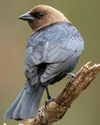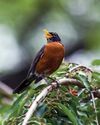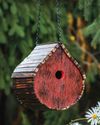
It’s one of the most astounding phenomena on earth. Every year in spring and fall, billions of birds worldwide are on the move to their seasonal homes. Everyone’s heard a fact or two about migration, but specific details about these major movements aren’t as well known. Here’s a primer on how these feathered travelers make their journeys.
Where do they go, and when?
Not all birds are great travelers; some stay home. A downy woodpecker or a chickadee might spend its whole life close to where it hatched. Others do move, but only short distances. For example, certain kinds of grouse migrate by walking, putting only 10 or 12 miles between their summer and winter territories.
Birds of a feather don’t always flock together when it comes to migration. Some American robins fly from Canada to Florida in fall, but others in mild climates stay in the same place all year. An individual robin might even go south one year but remain up north the next.
On the other hand, some species make astonishing journeys every year. American golden-plovers travel from the tundras of northern Canada and Alaska to southern South America in fall. Arctic terns fly even farther, moving from the cold, northernmost Canadian islands or the north side of Greenland all the way to the edge of the Antarctic. They log some serious mileage—their yearly round trip can total more than 25,000 miles.
This story is from the October/November 2019 edition of Birds & Blooms.
Start your 7-day Magzter GOLD free trial to access thousands of curated premium stories, and 8,500+ magazines and newspapers.
Already a subscriber ? Sign In
This story is from the October/November 2019 edition of Birds & Blooms.
Start your 7-day Magzter GOLD free trial to access thousands of curated premium stories, and 8,500+ magazines and newspapers.
Already a subscriber? Sign In

Clever Cowbirds
Learn more about these birds that are infamous for letting others raise their young

Ask the Experts
Pros offer spring plant care tips and tough IDs

Rustic diy Birdhouse
Whether you're hardcore handy or an everyonce-in-a-while crafty person, you probably have a small pile of scrap wood handy. Grab your tools and turn your extra materials into any house wren's dream nest box.

THE LATEST IN Lilacs
Learn about updated varieties of this timeless classic and how to take care of them

Meet the ORIOLES
GET TO KNOW eight TYPES SEEN THROUGHOUT THE U.S. AND WHAT MAKES EACH ONE STAND OUT

CBD FOR YOUR PAIN
Everyone feels the hurt as you age, but CBD can help you deal with it

Welcome, New Blooms
Update your yard with 2024's freshest florals

Western Blues
Beckon these regional bluebirds to your yard with nest boxes and mealworms

Incredible Eggs
Fun facts about these tough yet fragile wonders

Life Well Lived
Surprising facts about bird life spans